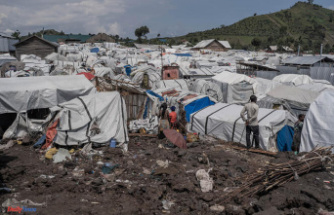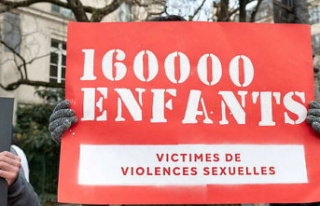The Coromandal Express line, one of three trains involved in India's worst rail disaster in decades, resumed service on Wednesday, six days after the collision that killed 288 people, according to a new official report.
"The Coromandal Express is back on track," Indian Railways spokesman Aditya Kumar Chaudhary told reporters.
The passenger train left Shalimar station near Kolkata on Wednesday afternoon five minutes behind schedule at 3:20 p.m. local time for a 25-hour journey south to Madras.
As usual, long queues of travelers snaked past the unreserved seating compartments.
"Four of my friends who were on the unfortunate train have been missing since Friday's accident," Samaresh Mondal, a 30-year-old migrant worker, told AFP before boarding the train.
"I am ready to accept my fate", he adds, "I am forced to go to Madras to earn my living and that of my family."
Rail traffic had resumed late Sunday afternoon at the site of the train collision on Friday, but the Coromandal Express line remained closed until Wednesday afternoon.
Late Tuesday evening, Chief Secretary of State for Odisha, Pradeep Jena, announced a revised official death toll of 275 to 288, after a count compiled in hospitals and morgues.
Mr. Jena said that 83 bodies had still not been identified.
At least 1,175 people were injured, many are in critical condition and still hospitalized.
A six-member team from the Central Bureau of Investigation (CBI) visited the crash site on Tuesday.
The Coromandal Express, linking Calcutta to Madras, had obtained the green light to circulate on the main track before being diverted on a track where there was already a freight train loaded with iron ore, according to the press.
The passenger train crashed at a speed of about 130 km/h into the freight convoy near Balasore, about 200 kilometers from Bhubaneswar, the capital of the state of Odisha.
Three carriages fell onto an adjacent track, hitting the rear of another passenger train, the Howrah Superfast Express which was operating between Bangalore and Calcutta.
In total, the two trains carried more than 2,000 passengers.
"We have been very worried since the heartbreaking accident on Friday," Pinki Bhuniya, 36, traveling with her husband and daughter, told AFP.
"We have no alternative but to travel by train because plane tickets are too expensive for us," she explains.
On Sunday, India's Railways Minister Ashwini Vaishnaw said the "cause of the crash and those responsible" had been identified.
He also clarified that "the change that occurred during the electronic referral is the cause of the accident".
The Times of India, citing a preliminary investigation report, said on Sunday that "human error" in signaling may have caused the collision between the three trains.
"No one responsible" for the accident will be spared, promised Indian Prime Minister Narendra Modi on Saturday, who visited the scene of the disaster and met the injured in hospital.
At this stage, this rail accident is the deadliest in India since 1995, when two express trains collided in Firozabad, near Agra, which houses the Taj Mahal, had killed more than 300 people.
The deadliest in the country's history remains that of June 6, 1981 in the state of Bihar (east), when seven wagons of a train, crossing a bridge, fell into the Bagmati River, killing between 800 and 1,000 people. .
07/06/2023 14:33:42 -- calcutta (AFP) © 2023 AFP












